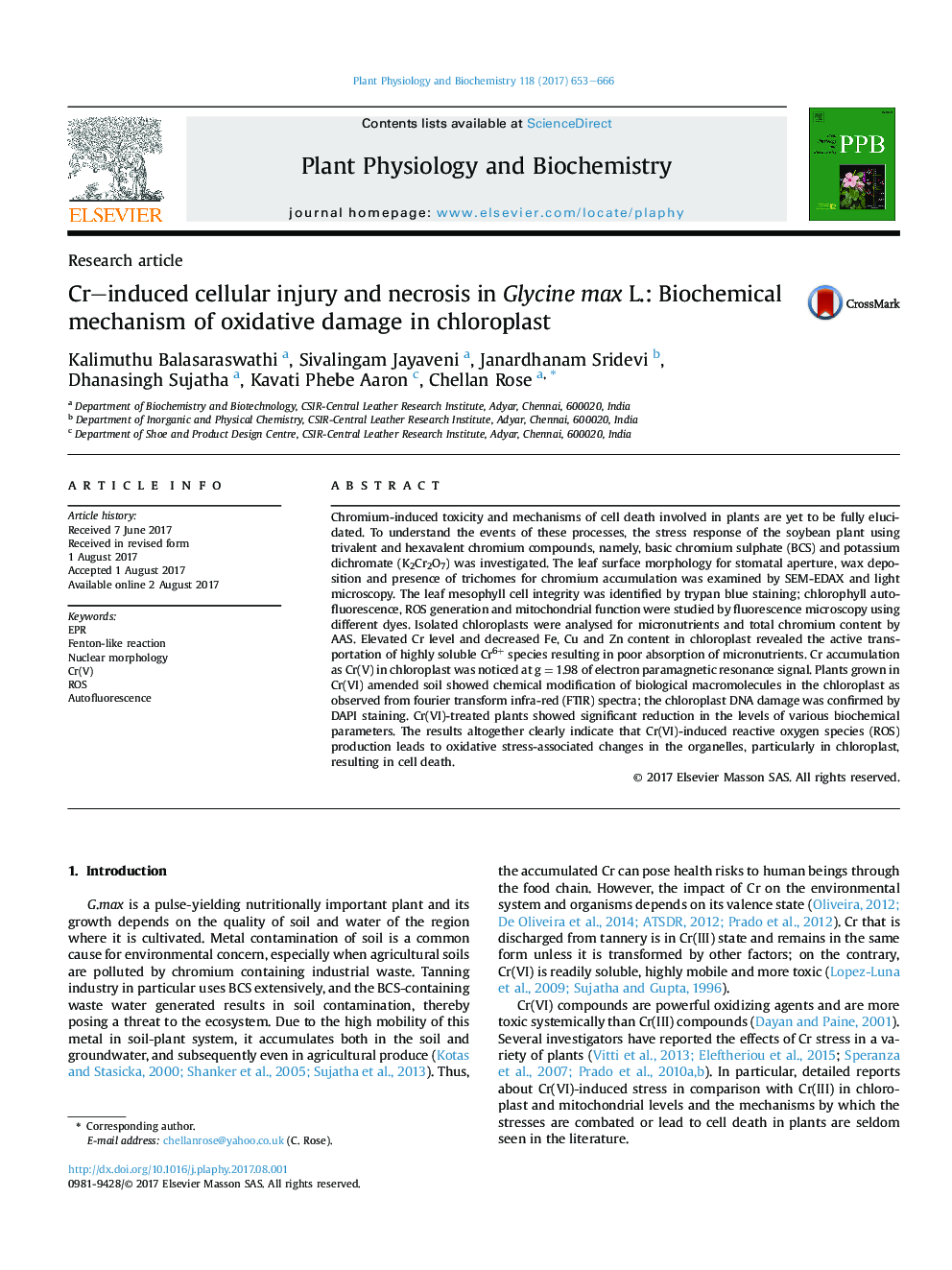| Article ID | Journal | Published Year | Pages | File Type |
|---|---|---|---|---|
| 5515482 | Plant Physiology and Biochemistry | 2017 | 14 Pages |
â¢Chloroplast EPR data confirm the presence of Cr(V), produced by Cr(VI) reduction.â¢Cr-induces oxidative modification of protein and lipid and impair their functions.â¢Cr affects mineral uptake, metabolic processes there by leading to cell death.â¢Mechanism proposed for Cr-induced oxidative stress in cellular macromolecules.
Chromium-induced toxicity and mechanisms of cell death involved in plants are yet to be fully elucidated. To understand the events of these processes, the stress response of the soybean plant using trivalent and hexavalent chromium compounds, namely, basic chromium sulphate (BCS) and potassium dichromate (K2Cr2O7) was investigated. The leaf surface morphology for stomatal aperture, wax deposition and presence of trichomes for chromium accumulation was examined by SEM-EDAX and light microscopy. The leaf mesophyll cell integrity was identified by trypan blue staining; chlorophyll autofluorescence, ROS generation and mitochondrial function were studied by fluorescence microscopy using different dyes. Isolated chloroplasts were analysed for micronutrients and total chromium content by AAS. Elevated Cr level and decreased Fe, Cu and Zn content in chloroplast revealed the active transportation of highly soluble Cr6+ species resulting in poor absorption of micronutrients. Cr accumulation as Cr(V) in chloroplast was noticed at g = 1.98 of electron paramagnetic resonance signal. Plants grown in Cr(VI) amended soil showed chemical modification of biological macromolecules in the chloroplast as observed from fourier transform infra-red (FTIR) spectra; the chloroplast DNA damage was confirmed by DAPI staining. Cr(VI)-treated plants showed significant reduction in the levels of various biochemical parameters. The results altogether clearly indicate that Cr(VI)-induced reactive oxygen species (ROS) production leads to oxidative stress-associated changes in the organelles, particularly in chloroplast, resulting in cell death.
